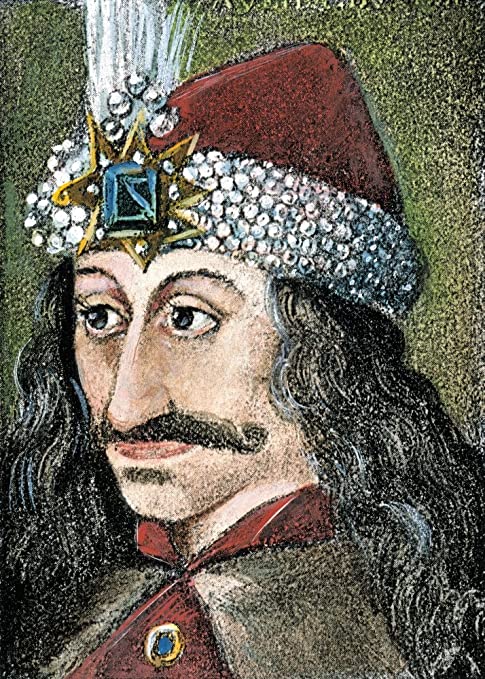A BRIEF HISTORY OF VLAD III THE REAL DRACULA

When it comes to iconic gothic horror figures, few are as memorable as the vampire count of Transylvania, Dracula. When it comes to the inspiration for Bram Stoker’s character, some attribute it to Vlad III Dracula who is better known by his infamous posthumous nickname, Vlad the Impaler. While it is possible that Stoker was inspired by the infamous figure, there is more to the Wallachian prince than the notoriety his ruthless actions earned him.
Vlad III was born in the year 1431 in Sighisoara, Transylvania, as the second son of Vlad II Dracul, whose induction into the knightly order known as the Order of the Dragon by King Sigismund of Hungary had earned Vlad II the surname ‘Dracul’ from the old Romanian word for dragon, ‘drac.’ Thus, Vlad III had the surname Dracula, which means ‘son of Dracul.’
This shared surname with Stoker’s work is why Vlad III is often said to be the inspiration behind Count Dracula, yet academic author Elizabeth Russell Miller suggests in her book “Dracula: Sense and Nonsense” that in Stoker’s notes from a book about Wallachia that Dracula means “devil” within Wallachian language. And while Stoker’s Dracula had strong ties to Transylvania, Vlad III’s ties with the historical region was cut short as Vlad III moved to Târgovişte in the principality of Wallachia in 1436, when his father took the reins of it.
However, the events that would shape the son’s later actions began in 1442, when his father went to a diplomatic discussion with the Ottoman Sultan Murad II, with both Vlad III and his brother, Radu, in tow. While sources provide conflicting views – either that Vlad and his brother were given to the Ottomans, or he and his family were captured and his father was let go on the
condition that Vlad III and Radu were their hostages – what is certain is that he and his brother were taken captive by the Ottomans.
Their imprisonment was not horrible, as the Ottomans did tutor the two in science, war, and the arts. Yet despite this positive treatment that brought his brother to the Ottomans’ side, Vlad III would remain opposed to the Ottomans later in life. While he was in captivity, his father and older half-brother were assassinated by the Wallachian nobles, and a year later, once freed from captivity, Vlad III would begin his attempts to reclaim his father’s seat as ruler of Wallachia.
His first attempt happened that same year of 1448, with him successfully taking back the seat with military support from Ottoman governors along the Danube River in northern Bulgaria while the current ruler, Vladislav II, was away in the Balkans fighting the Ottomans for the Hungarian governor, John Hunyadi.
However, his first rule of Wallachia would come to an end two months later when Vladislav returned and deposed him with aid from Hunyadi. Over the next eight years, Vlad III would shed his ties with the Ottomans, take up a strong anti-Ottoman position, and ally himself with Hungary in the ongoing conflict between the two. This led to Vlad III receiving the military support of King Ladislaus of Hungary who, according to medieval history professor Florin Curta of the University of Florida, happened to dislike Vladislav II.
The fall of Constantinople to the Ottoman Empire in 1453, coupled with his established opposition to the Ottomans, led to Vlad III being proclaimed ruler of Wallachia in 1456. And his first order of ending tribute to the Ottoman sultan that had maintained peace between Wallachia and the Ottomans, coupled with the actions he took to consolidate power, would result in the stories that earned him his historic, infamous title.
One of the first gruesome stories that was documented from his rule was how Vlad invited hundreds of Wallachia’s nobles to a banquet and had them killed and their still-twitching remains impaled on spikes. Pamphlets from the 1460s and 1470s are evidence that there is some truth to this story and some of Vlad the Impaler’s other infamous moves.
Another such event he was credited with in 1456 was impaling dozens of Saxon merchants who had worked with the nobles. As for the Ottomans, one story claims he had the turbans of a group of Ottoman envoys nailed to their skulls after they cited a religious custom to not remove them. Another story states that when Mehmet II, the man who had led the Ottoman conquest of Constantinople, invaded Wallachia and made it to Târgovişte, he found it deserted – with the corpses of all the Ottoman prisoners of war that Vlad had taken impaled in front of it.
Unfortunately for Vlad, he was forced into exile in Hungary shortly after having been unable to repel Mehmet II. During his exile, he married and had two children while his brother Radu, who had supported the Ottoman war effort, became governor of Wallachia. After Radu’s death in 1475, Vlad made one last attempt to reclaim his place as ruler of Wallachia with support from Stephen III the Great, ruler of the principality of Moldavia. While this attempt was successful, Vlad and some of his soldiers were ambushed later that year as they marched towards battle with the Ottomans, and Vlad died.
Vlad III Dracula’s victories against the Ottomans were celebrated throughout Wallachia and Europe at the time, even earning recognition from Pope Pius II. And despite pop culture’s focus on his brutal actions, Vlad remains a positive figure in Romania to this day: not as a bloodthirsty monster, like Stoker’s Dracula, but as a fierce yet just ruler.

Leave a comment